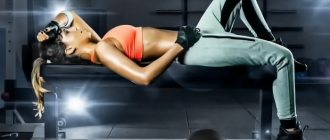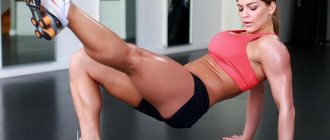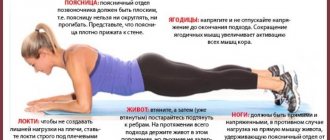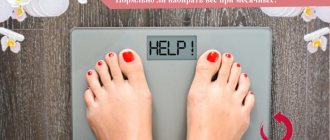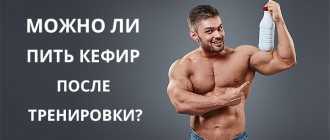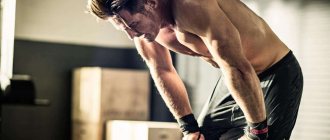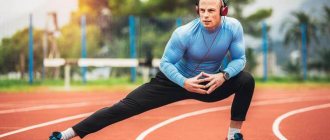Lower back pain after exercise is a condition that is familiar to every person. Both professional athletes and ordinary people who prefer to engage in fitness face it. The lumbar spine is a weak area for any physical activity, both during intense sports and during daily household stress. This can be explained by the fact that the lower back is the center of our body, its supporting point. Most often, pain in the lower back is caused by a weak muscle corset, which is not able to properly support the spinal column. Incorrect posture also worsens the general condition. In professional athletes, the lower back is often overloaded due to regular exercise.
State Description
If the lower back hurts badly after a workout, then a person cannot get out of bed normally, moves in a bent position, and even breathes normally in this condition is very difficult for him. Many people develop pain in the back due to poor body fitness.
But it should be noted that athletes are not protected from this condition. Bodybuilders, for example, with age begin to feel severe stabbing pain in the spine after training; unbearable pain occurs even when trying to simply bend forward. Therefore, we can conclude that lower back pain can occur in any person, regardless of whether he plays sports or not.
In weightlifters, back injuries most often occur in the lower spine and lower back. Unpleasant sensations range from mild short-term attacks of pain to long-term acute pain. Causes of lower back pain after exercise can be associated with severe muscle strain, disc damage, age-related changes in bone tissue, poor posture, and poor technique for lifting heavy objects in the gym.
To prevent the occurrence of such a situation, as well as various complications, it is necessary to determine the mechanism of development of the pain syndrome and its main symptoms.
Why does my back hurt?
Pain in the spine can occur directly after injuries, pathologies of the vertebrae, ligaments and discs, or damage to soft tissues. It depends on the position of the body, the level of physical activity, but can also be reflected, for example, in diseases of the internal organs. To some extent, the back itself is vulnerable due to its structure.
Its basis is the spine, which provides supporting, protective, motor and shock-absorbing functions. This is due to the cartilage of the intervertebral discs, muscles and ligaments, which tend to wear out over time with the wrong lifestyle and cause degenerative diseases of the musculoskeletal system.
Inside the spinal column is the spinal cord, its paired roots innervate almost all organs and tissues. Any disturbance in this complex system can cause pain. The cervical and lumbar regions suffer most often due to their greatest loads and mobility.
What to do if you have back pain?
A doctor's examination is required to determine the cause, especially if the pain has become frequent. Only a specialist can make the correct diagnosis and prescribe treatment. You can't do self-diagnosis.
First, you can contact a therapist, who will identify a set of symptoms and refer you to the right specialist. If the cause is known and obvious, you can continue the prescribed therapy. Neurologists, orthopedists, and vertebrologists treat back problems.
Signs of developing discomfort
Do your lower back muscles hurt after training, do you experience weakness, fatigue, a general feeling of malaise, or numbness? These are all serious symptoms to worry about. This condition may indicate problems with the bowels or bladder. In order not to bring the disease to a dangerous stage of development, it is important to promptly consult a doctor who will help prescribe effective treatment.
Regular back pain in a child is also a serious cause for concern. Most often, this condition occurs in childhood due to wearing heavy things and problems with posture. But acute pain syndrome can also be a sign of a serious illness: scoliosis and even tumor formation.
Non-drug relief methods
Wearing a fixing belt or collar and bed rest is necessary for pain in the back muscles after injury or surgery. Transcutaneous electrical neurostimulation, using electrical impulses, “intercepts” the pain signal from the receptors of diseased organs to the brain. For muscle pain in the back, rehabilitation clinic specialists perform acupuncture at biological points on the skin. Electroacupuncture involves the application of intermittent electrical impulses through acupuncture needles.
Physiotherapists prescribe procedures to relieve pain and relieve spasm of the back muscles. Medicinal electrophoresis is based on the introduction of medicinal substances into the body using small electrical impulses. This treatment helps relieve back pain for a long time, since painkillers, anti-inflammatory drugs and vitamins absorbed through electric current have a longer lasting effect on the body. Phonophoresis is one of the alternative methods of administering drugs by exposure to ultrasound. The anesthetic drug is absorbed into the capillaries, making it more effective and targeted.
Laser therapy (using light beams of infrared, red and ultraviolet spectra) brings relief from pain, relieves swelling and inflammation. Laser therapy helps relieve muscle spasm and pain in many spinal diseases that cause back pain:
- osteochondrosis;
- arthrosis;
- scoliosis;
- intervertebral hernia.
Magnetic therapy is useful for many diseases of the body. The low-frequency magnetic field has an effect at the cellular level, as a result of which pain and inflammation are relieved, mobility is restored, and muscle swelling is reduced.
Discomfort in ligaments and muscles
Pain in the ligaments usually manifests itself both at rest and during movement, but when moving, the pain syndrome only increases.
As a rule, the lower back hurts after back training due to sprained ligaments or muscles. This condition can be prevented by developing muscles and strengthening the spine. Even people who have previously been injured while playing sports can significantly improve their condition and strengthen their muscles.
Professional athletes know that the simultaneous work of antagonist muscles is very important when training. This is especially true for those who have serious back problems. To prevent post-workout pain, it is important to try to evenly distribute the load on the spine while playing sports. This means that doing 300 squats in order to strengthen the abdominal muscles is incorrect and even dangerous to health. The trainee must evenly distribute the entire load on the spine, this also applies to antagonist muscles.
Some types of exercises are prohibited for persons with osteochondrosis. Weightlifting, which puts a lot of stress on the spine, can only aggravate the pain syndrome. It is important to exclude or carefully monitor the following types of exercises: leg press from a seated position, deadlift, lunges with a load on the shoulders, military press.
Professional athletes have a well-trained body, so the likelihood of injury or some kind of complication in their case is minimal. Beginners in the sport should pay special attention to the technique of lifting weights, since performing the exercises incorrectly can cause serious health problems. If your lower back hurts after working out your abs, then it is important to reduce the weight you lift or the number of repetitions.
Features of the exercises
When performing exercises to strengthen the muscular skeleton and spine, emphasis should be placed on the oblique, transverse, lumbar and rectus abdominis muscles, as well as the quadratus lumborum and paraspinal muscles of the back.
Many pain sensations can be eliminated using traditional treatment methods: proper rest, the use of cold and warm compresses, and taking medications. If the pain syndrome continues for several days, and the patient develops weakness and a feeling of malaise, then it is important to immediately see a doctor.
Some causes of back pain associated with the spine may go undetected for a long time. The attending physician will help you choose an effective method of treating the spine and eliminating pain.
Symptoms that accompany back pain
The clinical picture of spinal pain depends on the location:
| Cervical spine | Thoracic spine | Lumbar spine |
| Headaches and dizziness | Burning in the chest | Change in the number of urinations |
| Numbness and weakness of the hands down to the fingertips | Difficulty in inhaling/exhaling | Numbness and weakness of the lower extremities, including the buttocks and toes |
| Blood pressure surges | Feeling of tightness in the chest | Low sensitivity during bowel movements |
| Floaters and flashes in the eyes | Pain between and under the shoulder blades | Erectile dysfunction and decreased libido |
Discomfort in the lower back
Why does my lower back hurt after back training? The most common cause of this condition is improper exercise technique. When training, the body should resemble a straight and even line, and the lower back should be located at the same level as the legs and torso. Incorrect position of the lower back during exercises often provokes severe pain. In this case, you should immediately stop exercising, otherwise muscle discomfort may lead to the development of serious complications.
In addition, lower back pain can develop with different types of dynamic planks. The technique for performing each type of plank can differ significantly - some of them involve raising and lowering the spine, which provokes pain.
Discomfort in the back
The back, including the spine, bears the brunt of the load during training. It is for this reason that you should not be very surprised at the occurrence of pain in this area. If unpleasant symptoms appear, it is important to immediately stop doing the plank and get proper rest. Continuing training is dangerous for the development of progressive back pain, as well as the appearance of diseases: kyphosis, scoliosis, hyperhidrosis.
Also, the back can be injured when performing a dynamic plank. Incorrect sudden movements, as well as poor technique, can cause damage to the vertebrae or problems with the nutrition of the intervertebral discs, which can have serious consequences for human health.
Causes of back pain by location
Pain can occur in a variety of places in the back. Then they talk about its localization.
Pain on the right side
The right side of the back may hurt due to spinal curvature, kyphosis, lordosis, myositis, intervertebral disc displacement, and obesity.
Somatic pathologies can also cause pain in this area:
- formation of stones in the organs of the urinary system;
- inflammation of the vermiform appendix of the cecum (appendix);
- inflammation of the gallbladder;
- nephritis;
- inflammation of the ovaries;
- salpingitis.
Pain on the left side
This area of the back may hurt in the following cases:
- splenitis;
- ICD;
- root pinching;
- duodenitis;
- oophoritis.
Pain localized above the lower back may be associated with inflammation of the serous membranes covering the lungs, damage to the bronchi, intercostal neuralgia, and ischemia.
Pain in the lumbar region
The lower back suffers very often, as it bears a colossal load. This section becomes inflamed when the nerve roots are damaged, osteochondrosis or hernial protrusion. Less commonly, the cause may be spinal tuberculosis, arthritis, lumboischialgia, decreased density and disruption of the structure of bone tissue, Reiter's syndrome - a combination of urethritis and prostatitis.
Pain in the lumbar region is usually chronic.
In the lumbar area on the right
Pain in the lumbar region occurs with scoliosis, tuberculosis, myositis, neuralgia, tumor, osteomyelitis, spondylitis. An acute attack can be caused by urolithiasis or pyelonephritis.
Shooting is typical for diseases of the lower back with frequent involvement of the spinal roots (radiculitis). Constant dull and monotonous pain is more typical for an organ such as the liver.
Left lumbar region
Most often, the left side begins to hurt after physical activity. The condition improves after rest. Pain can also occur with diabetes or root pinching. If it does not go away at rest, the reasons may be:
- scoliosis;
- osteochondrosis (with a sedentary lifestyle or poor posture);
- vertebral infections;
- circulatory disorders.
Pinched nerve
Most often, the sciatic nerve is pinched - sciatica. Its myelin sheath is not damaged. This is usually a consequence of osteochondrosis. When pinched, a sharp and acute pain occurs, radiating to the leg, sacrum, and lower back.
With compression radiculopathy, the roots of the spinal nerves are also compressed due to a herniated disc or a decrease in its height and, as a result, the distance between the vertebral bodies. Such pain is felt as “superficial”, it sharply intensifies when coughing, exertion or sneezing.
Intervertebral hernia
A herniation is an extrusion of the core of the intervertebral disc into the spinal canal. More often it becomes a consequence of untreated osteochondrosis. The central part protrudes towards the spinal cord, compressing it. Even a small load in such cases leads to a decrease in the height of the cartilage and an even greater protrusion of the hernia. The pain is sharp and sharp, radiating to the arm or leg.
In the area of the shoulder blades
Pain characteristics may indicate a diagnosis:
- A stomach ulcer is a growing dull pain. Eliminated with medications.
- Intercostal neuralgia is a disease characterized by acute pain with any physical effort.
- Osteochondrosis - dizziness, changes in pressure, numbness of the hands.
- Exacerbation of angina - pain is localized in the area of the left shoulder blade, radiating to the chest and under the collarbone.
Pain along the spine and in the back
More often they occur when nerve endings are pinched. Exacerbations are associated with spinal curvature. If the pain is not pronounced, we can talk about protrusion. With increasing pain, you can think about osteochondrosis. Pain along the spine is characteristic of myositis, fractures, thinning and wear of intervertebral discs, and spondyloarthritis. They are always sharp and constant.
Causes of pain below the lower back
Such pain is often associated with osteochondrosis and spondyloarthrosis. Less commonly, such sensations may appear when:
- diseases of the genital area in women (endometritis, adnexitis, vulvitis, cervicitis, oophoritis);
- pregnancy;
- menses;
- ulcerative colitis;
- appendicitis;
- diseases of the prostate or bladder - in men.
Elimination of discomfort
What to do if your lower back hurts after training? It is important to remember that you should stop exercising immediately after the first unpleasant symptoms appear. It is important to take a relaxed position, rest, and assess the severity of pain. Perhaps it only manifested itself due to a muscle spasm or minimal overexertion, but there is a risk of real health problems.
In addition, it is important to pay special attention to the training technique. After a correctly performed exercise, back pain and strain do not occur.
Situations requiring urgent medical attention
Urgent consultation with a doctor requires back pain that occurs in the following cases:
- injury;
- neurological symptoms in the form of tingling and numbness in the limbs;
- temperature is combined with back pain;
- numbness in the arms and legs, weakness and tingling sensation;
- gait has changed or legs are lost;
- there is a history of cancer;
- weight loss for no apparent reason;
- urination and defecation are impaired - a person cannot control these processes;
- back pain radiates to the chest, jaw and neck;
- consciousness is confused and dizzy;
- numbness in the genitals and weakness, “wooliness” in the legs;
- leg cramps;
- problems with conception or erection;
- problems with the gastrointestinal tract, for which treatment by a gastroenterologist does not help;
- pain in the coccyx and pelvis area, intensifying with changes in body position;
- increased pain when sitting or standing for a long time.
Specialists at the AXIS center in Zelenograd will help you find out the cause of the pain. It contains a diagnostic database of the latest generation equipment. All doctors are highly qualified and have extensive work experience.
Compliance with training rules
When conducting training, a person must follow the following rules:
- handle cargo and heavy objects carefully;
- regularly consult with a trainer (at least in the first 6 months of training in the gym);
- wear comfortable, loose clothing and shoes during training, which will help prevent the development of injuries;
- drawing up a proper diet with plenty of calcium in foods (it will help improve bones) and protein (it effectively affects weight and strengthens the muscle corset).
If back pain appears unexpectedly after working out in the gym, you should not panic too much. It is important to listen to the state of your body, reduce the physical stress on the body, which it cannot fully cope with at this stage.
If your lower back hurts after strength training, it is important to see a doctor immediately. It is dangerous to carry out self-treatment, since such a lesion in the back can be eliminated with the help of compresses and local medications, which would be very dangerous for other types of injuries.
Basic Rules
When engaging in active sports, it is important to adhere to the following rules:
- Move more. Adopting a healthy lifestyle, monitoring your weight, actively playing sports, and avoiding sedentary activities will help reduce the risk of back injuries and pain. The more a person moves, the better the condition of his body.
- Stop smoking. Nicotine in cigarettes negatively affects the structure of intervertebral discs, changing it and leading to rapid dehydration. As a result, the discs lose their strength and wear out quickly.
- Maintain correct posture. Some people, due to their professional activities, often have to spend a lot of time in a sitting position. Some experts advise placing the computer screen at eye level, the chair should correspond to the person’s height, so that when sitting, the bend angle in the knees reaches 90 degrees.
- Take regular breaks if you have to stay in one position for a long time. You should get up from your desk every half hour and walk around the room for a few minutes to relieve the pressure your spine receives while sitting.
- Try to use your laptop and phone less. With regular use of a mobile phone, when a person’s neck is in an inclined position or turned to the side, the state of posture greatly worsens and additional stress appears on the spine. To prevent such problems, you should purchase a special Bluetooth headset that will help relieve tension in the spine and neck.
Correct posture
Watch your body position while sleeping. Doctors advise sleeping on your side and on a firm mattress. The position should be as comfortable as possible. The fetal pose helps eliminate tension in the hips and relieves fatigue. The worst position for sleeping is considered to be on the stomach; it provokes the development of spinal curvature.
If pain in the back develops, you should immediately stop training and perform incorrect exercises. The back should fully rest and recover. Also, if your back hurts in the lumbar region after training, it is important to visit a doctor who will prescribe anti-inflammatory drugs and prescribe optimal recovery for the patient’s body.
